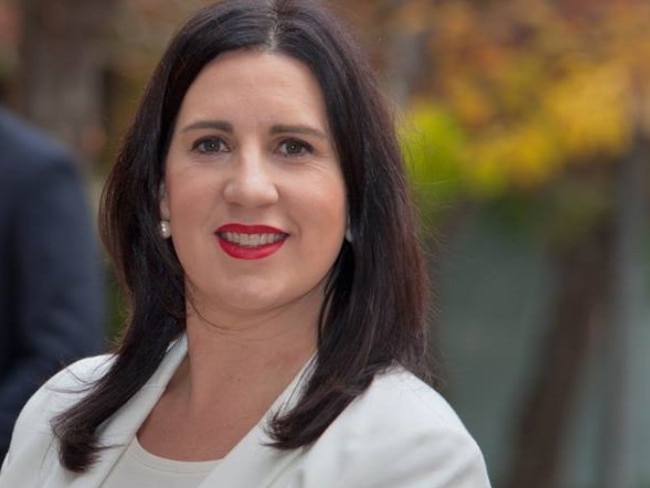Australians start stockpiling paracetamol ahead of the TGA’s proposed changes to pack sizes
A proposed major cut to the number of paracetamol tablets Aussies can buy off the shelf has many stockpiling.

National
Don't miss out on the headlines from National. Followed categories will be added to My News.
Worried Aussies have started stockpiling paracetamol more than a year out from a proposed regulatory change that would see pack sizes of the pain killer available off the shelf in pharmacies slashed from 100 to 32 tablets or capsules.
And the head of peak patient body Pain Australia, Giulia Jones, said it would fight any moves by the Therapeutic Goods Administration (TGA) to further tighten rules around access to slow-release paracetamol.
She confirmed people had started stockpiling paracetamol already – meaning that many could have stores of hundreds, if not thousands of tablets by the time the proposed changes are implemented next year.
“I think our cohort started immediately [when the proposed change was announced in February], especially Panadol Osteo [a slow release paracetamol],” she said.
“Even though their medicine isn’t at the moment on a script, they are using it very regularly – some people for flare ups and other people just to cope from day to day.
“And as a result, they really do need to be able to have access to six to eight paracetamol today. As a result of that, as soon as concern, whispers and suggestions go round about things being harder, they are more likely to go and buy more.”

The reduction of pack sizes is part of a raft of proposed amendments to the Poisons Standard, designed to reduce Australia’s incidence of serious injury and death from intentional paracetamol overdose.
Other changes include reducing the maximum size of packs available for general sale (such as in supermarkets and convenience stores) from 20 to 16 tablets or capsules; making other pack sizes of up to 100 tablets or capsules only available under the supervision of a pharmacist; and banning the use of bottles for paracetamol products, meaning only blister packs will be available for sale.
The TGA plans to implement the changes from 1 June, 2024. In February this year it opened the interim decision up to community consultation for a month.
More than 200 submissions were received during the consultation phase and would be published along with the final decision when it is released by the TGA.

Among the submissions was a call from peak doctors’ organisation, the Royal Australian College of General Practitioners (RACGP), to further cut the pack size of paracetamol pills available off the shelf in pharmacies and to upschedule modified-release paracetamol to prescription-only.
The RACGP submission, signed by president Dr Nicole Higgins, said that while the RACGP supported the reduction of pack sizes of paracetamol available in pharmacies and supermarkets, the changes proposed in the TGA’s interim decision were unlikely to significantly impact the harms from paracetamol overdose.
“Given that overdoses mostly occur from available stockpiles in the home, the small reduction in pack size is unlikely to reduce the incidence of paracetamol overdoses in Australia,” Dr Higgins’ submission said.
“The RACGP recommends pack sizes be reduced further to make an impact on stockpiled medications.”

The RACGP also recommended the TGA upschedule modified release paracetamol to prescription-only.
“There is an overuse of modified release paracetamol for conditions for which there is insufficient evidence of benefit, such as osteoarthritis and back pain,” Dr Higgins wrote.
“Additionally, treating overdose from modified release paracetamol is more difficult than normal paracetamol.”
Ms Jones said restricting access to paracetamol would have a massive impact on millions of Australians who suffer from regular pain such as back pain and arthritis.
“The whole thing from beginning to end has been a debacle and yes it has caused some stockpiling,” she said.
“A lot of people use paracetamol really well, understand it really well, are very careful and very responsible. They don’t deserve to be punished.”
Ms Jones cited the case of a friend who was caring for an adult with Down syndrome who needed regular painkillers for arthritis. The man, aged in his 50s, depended on paracetamol to keep his pain under control.
“It’s a really scary thought for that family to be without that, or to have to justify it or have more hoops to jump through,” she said.
“It’s [stockpiling] is just a fear response, it’s just what happens when a cohort gets scared, and people with chronic pain are regularly bullied and ignored as it is.”

She said any move by the TGA to beef up its interim decision would not be welcomed by Pain Australia.
“Nothing’s been decided yet, if we actually saw it upscheduled I’d be surprised, but if it does happen, we’ll probably campaign very hard even though the decision has been made, and make it very difficult for the government,” she said.
“It’s 3.4 million invisible people, it’s as big as mental health this problem – chronic pain.”
In the meantime, she urged the Federal Government to consider investing in a public health campaign about the safe storage of medicines, especially in light of the fact that many Australians may wind up holding extra supplies of paracetamol.
“I do think we’re overdue for a conversation about the safety and storage of medicines in the home,” she said.
More Coverage
Originally published as Australians start stockpiling paracetamol ahead of the TGA’s proposed changes to pack sizes




